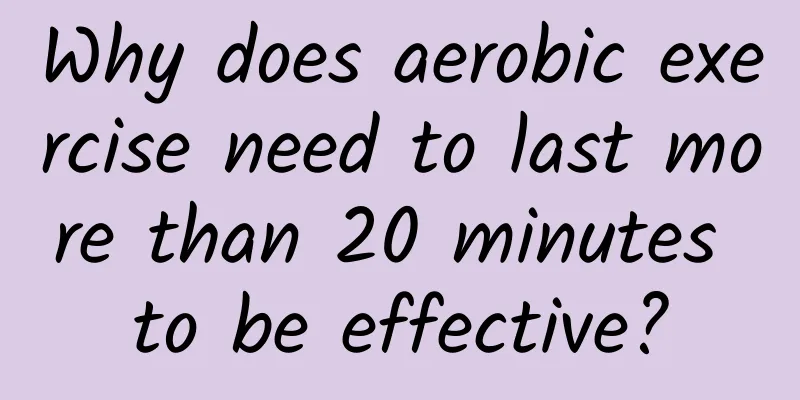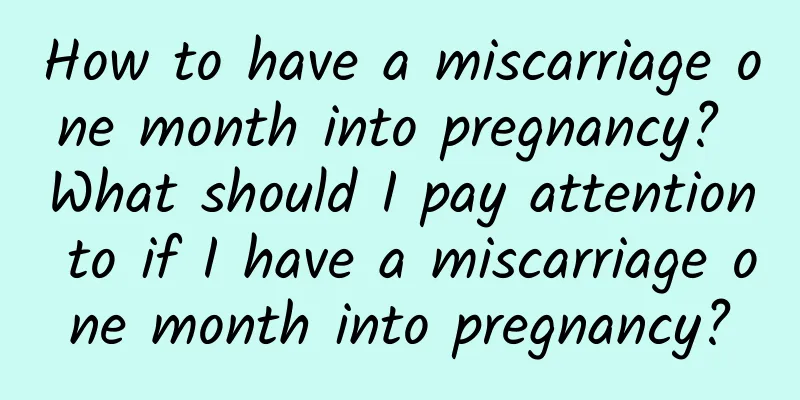Why does aerobic exercise need to last more than 20 minutes to be effective?

|
Anyone who is used to doing aerobic exercise knows that aerobic exercise must last for more than 20 minutes to be effective. But why “20 minutes”? A well-known Japanese fitness coach explained that the human body's energy comes from fat and sugar (carbohydrates). When exercising, a large amount of sugar will be consumed at the beginning, and then the fat will slowly begin to burn. "20 minutes" is the time when the body switches to burning a large amount of fat. In addition, when doing aerobic exercise, it is not the time but the "load" that affects fat burning. Aerobic exercise with high load (making you breathless) mainly consumes carbohydrates, while aerobic exercise with low load (slightly increasing your breathing rate and allowing you to talk to others) consumes fat. 10 minutes of aerobic exercise can burn fat It is recommended that just 10 minutes of aerobic exercise can achieve the effect of burning fat. Even if you exercise for 5 minutes, take a break, and then exercise for another 5 minutes, you can still achieve the effects of 10 minutes of exercise. As for what type of aerobic exercise is effective in reducing fat? In his book "The Lower Body Determines the Rest of Your Life", the well-known Japanese fitness coach Nakano James Xiu proposed that high-efficiency aerobic exercise is "brisk walking". Just slightly changing the way you walk can achieve a more effective fat-shedding effect than running. 7-8 km/h is the easiest running speed Why "walk" instead of "run"? It turns out that the speed limit between "walking" and "running" is 8 kilometers per hour. Taking the treadmill as an example, if you start walking at 5 kilometers per hour and slowly increase the speed, there is no problem at the beginning, but when the speed exceeds 7 kilometers per hour, you will find that this is the limit of walking and running is easier. Whenever a jogging beginner asks me about the running speed, my answer is: "7 to 8 kilometers per hour." Although everyone's condition is different, basically this is the running speed that is the least taxing and most comfortable for the human body. Brisk walking burns more calories than running "7 kilometers per hour" is the upper limit of the average person's walking speed. It is the running speed that is least taxing and most comfortable for the human body. However, the amazing thing is that running at this speed will actually reduce calorie consumption. In other words, under the premise of "7 kilometers per hour", "walking" can burn more calories than "running". Practice the "brisk walking method", walk with big strides and back straight, maintaining a speed that allows you to breathe slightly. In this way, even without running, you can achieve similar effects to aerobic exercises such as jogging, and even burn more calories than running! |
<<: Does walking 10,000 steps a day cause bone problems? 233 Action is no longer busy
Recommend
2 Dietary Guidelines for Patients with Irregular Menstruation
Irregular menstruation is a common gynecological ...
How to treat moderate cervical erosion
Moderate cervical erosion can be improved through...
Common treatment methods for uterine fibroids What are the new treatment methods for uterine fibroids
Uterine fibroids are a common clinical gynecologi...
After abortion, patients should give priority to three aspects of nourishment
Abortion is a common method to end an unwanted pr...
Can pelvic effusion cause abdominal pain?
Can pelvic effusion cause abdominal pain? After s...
Experts remind: Excessive hygiene can also cause vaginitis
Vaginitis is a very common gynecological disease....
Experts explain the causes of ovarian cysts
Many women suffer from ovarian cysts, which have ...
How to treat premature ovarian failure
How to treat premature ovarian failure? Premature...
How to take measures to prevent cervical erosion 4 ways to prevent cervical erosion
If a woman suffers from a gynecological disease s...
Experts teach women how to prevent cervical hypertrophy
Cervical hypertrophy is a gynecological disease w...
Do you need to treat chronic cervicitis? Patients with chronic cervicitis must know these things
Chronic cervicitis is a common disease that has a...
What are the symptoms of uterine prolapse?
What are the symptoms of uterine prolapse? There ...
How to treat ovulation bleeding
How to treat ovulation bleeding? Ovulation bleedi...
Is yoga good for adenomyosis? Are there any other treatments?
Adenomyosis is a disease that cannot be ignored. ...
What to do if your menstrual cycle is disrupted?
What to do if your menstrual cycle is disrupted? ...









